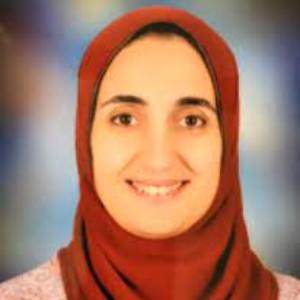Title : Bone marrow- versus adipose tissue-derived mesenchymal stem cells: The long-term effect on experimentally lacerated gluteal muscle A comparative histological study
Abstract:
Introduction: Skeletal muscle injury is a common clinical challenge. It is usually associated with fibrosis and disability. Regenerative medicine is an emerging promising strategy that could improve such cases. However, it is not clear if stem cells have beneficial long-term effects on skeletal muscle regeneration and re-innervation.
Aim: to compare the long-term effects of using bone marrow mesenchymal stem cells (BM-MSCs) versus adipose stromal stem cells (ADSCs) on the re-innervation and regeneration of experimental gluteal muscle laceration injury in adult female albino rats.
Methods: Six young male rats were used as a source of MSCs. Thirty-five adult female albino rats were divided into: Group I (negative control), Group II (Sham control), Group III (Untreated Laceration): in which laceration injury was done in the right gluteal muscle then rats were left for spontaneous healing, Group IV (laceration treated with BM-MSCs): right gluteal muscle was lacerated. Rats concomitantly received a single intramuscular injection of 1X106 BM-MSCs in the lacerated muscle, Group V (laceration treated with ADSCs): in which right gluteal muscle was lacerated with concomitant single intramuscular injection of 1X106 ADSCs in the lacerated muscle. Rats from each group were subdivided into two subgroups; subgroup “a and b” in which rats were sacrificed after ten days and eight weeks respectively. At each time point, muscle specimens were collected and prepared for proper histological techniques. Immune-histochemical staining of neurofilament light chain (NFL) protein was also done to study re-innervation. Morphometric study and statistical analysis were also performed.
Results: Granulation tissue and mononuclear cellular infiltration with significant increase in collagen fibers content and failure of re-innervation were noticed in untreated laceration group. The BM-MSCs treated groups showed regeneration of muscle fibers, however, collagen fibers content was increased. On the other hand, the ADSCs treated group showed better results regarding the regenerated muscle fibers, number of myotubes and collagen fibers content was significantly decreased. Muscle re-innervation was restored in both stem cell treated groups at long-term duration.
Conclusions: Both BM-MSCs and ADSCs improved skeletal muscle laceration injury at short- and long-term durations. But effective re-innervation of injured muscles occurred only at the long-term duration. ADSCs had better effects in treating muscle laceration injury than BM-MSCs as evidenced by increased number of regenerating myotubes and decrease collagen fibers content at site of injury.



